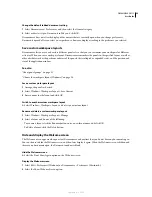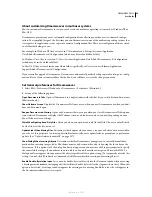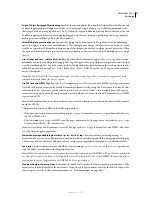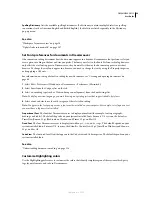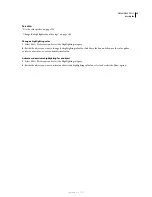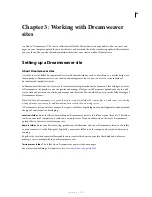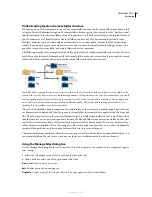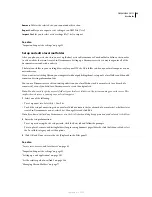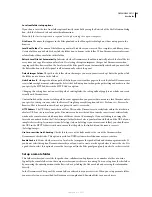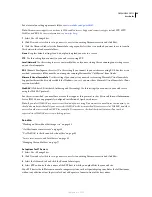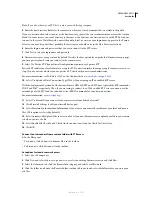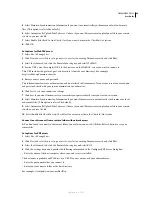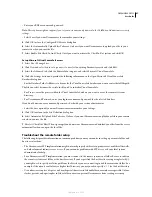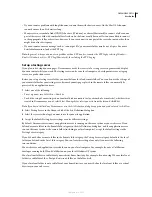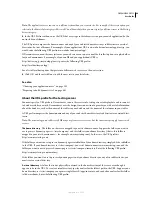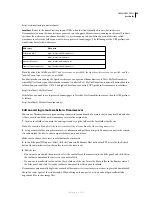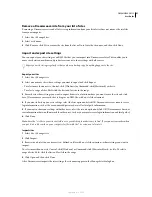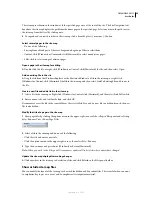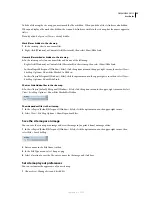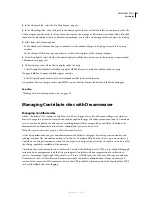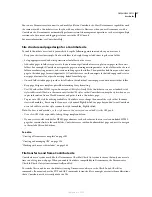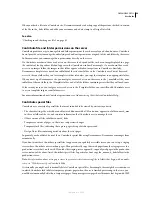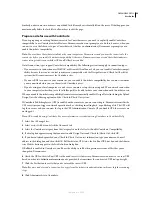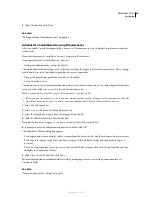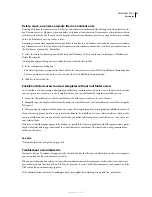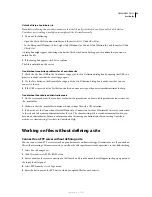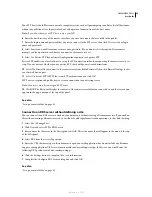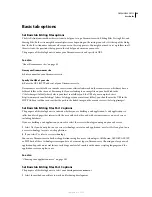
DREAMWEAVER CS3
User Guide
49
Note:
The application server can run on a different system than your remote site. For example, if the Access option you
selected in the Remote Info category is Microsoft Visual SourceSafe, then you must specify a different server in the Testing
Server category.
5
In the URL Prefix text box, enter the URL that users type in their browsers to open your web application, but do
not include any filename.
The URL prefix comprises the domain name and any of your website’s home directory’s subdirectories or virtual
directories, but not a filename. For example, if your application’s URL is www.adobe.com/mycoolapp/start.jsp, you
would enter the following URL prefix: www.adobe.com/mycoolapp/.
If Dreamweaver runs on the same system as your web server, you can use one of the
localhost
options as a placeholder
for your domain name. For example, if you run IIS and your application’s URL is
http://buttercup_pc/mycoolapp/start.jsp, enter the following URL prefix:
http://localhost/mycoolapp/
For a list of localhost options that pertain to different web servers, see the next section.
6
Click OK, and then click Done to add the new site to your list of sites.
See also
“Choosing your application server” on page 502
“Preparing to build dynamic sites” on page 491
About the URL prefix for the testing server
You must specify a URL prefix so Dreamweaver can use the services of a testing server to display data and to connect
to databases while you work. Dreamweaver uses the design-time connection to provide you with useful information
about the database, such as the names of the tables in your database and the names of the columns in your tables.
A URL prefix comprises the domain name and any of your website’s home directory’s subdirectories or virtual direc-
tories.
Note:
The terminology used in Microsoft IIS may vary from server to server, but the same concepts apply to most web
servers.
The home directory
The folder on the server mapped to your site’s domain name. Suppose the folder you want to
use to process dynamic pages is c:\sites\company\, and this folder is your home directory (that is, this folder is
mapped to your site’s domain name—for example, www.mystartup.com). In that case, the URL prefix is
http://www.mystartup.com/.
If the folder you want to use to process dynamic pages is a subfolder of your home directory, simply add the subfolder
to the URL. If your home directory is c:\sites\company\, your site’s domain name is www.mystartup.com, and the
folder you want to use to process dynamic pages is c:\sites\company\inventory. Enter the following URL prefix:
http://www.mystartup.com/inventory/
If the folder you want to use to process dynamic pages is not your home directory or any of its subdirectories, you
must create a virtual directory.
A virtual directory
A folder that is not physically contained in the home directory of the server even though it
appears to be in the URL. To create a virtual directory, specify an alias for the folder’s path in the URL. Suppose your
home directory is c:\sites\company, your processing folder is d:\apps\inventory, and you define an alias for this folder
called warehouse. Enter the following URL prefix:
September 4, 2007

